The automotive landscape is ever-evolving, and among the compact hatchback segment, the Kia Picanto and Suzuki Swift stand out as two popular contenders. Each offers its own set of innovations, performance metrics, and features, appealing to different segments of drivers. This article explores the key technical aspects, innovations, and overall user experience of these two vehicles, providing a comprehensive comparison for potential buyers.
Kia Picanto vs Suzuki Swift – Differences & prices compared
Compare performance, boot capacity, efficiency and price at a glance.
Find out which car is the better choice for you – Kia Picanto or Suzuki Swift?
Performance and Engine Specifications
The Kia Picanto is available with two petrol engine options. The 1.0L three-cylinder engine produces 63 HP, while the more powerful 1.2L four-cylinder option delivers 79 HP. The Picanto's performance is complemented by choices of a manual or automated manual transmission, helping it achieve a quick 0-100 km/h acceleration in as little as 13.1 seconds. Additionally, the Picanto boasts a top speed of 145 km/h with a torque range of 95 Nm to 115 Nm.
In comparison, the Suzuki Swift features a single 1.2L three-cylinder petrol engine generating 82 HP, paired with either a manual gearbox or a CVT. The Swift is slightly quicker with a 0-100 km/h time of 10.9 seconds. The Swift’s top speed reaches 170 km/h and provides a torque output of 112 Nm, making it slightly more powerful in terms of acceleration compared to its Kia rival.
Fuel Efficiency
Fuel efficiency is a crucial consideration for buyers in this segment. The Kia Picanto sacrifices a tad more in this department with a consumption rate ranging between 5.2 to 5.7 L/100km. This is slightly less appealing when juxtaposed against the Suzuki Swift’s figures, which provide an efficient consumption rate of 4.4 to 4.9 L/100km. Thus, in terms of fuel economy, the Swift gains an advantage, underscoring its suitability for cost-conscious drivers.
Interior and Comfort
Inside the cabin, both vehicles offer practical yet contemporary designs. The Kia Picanto can comfortably seat four to five passengers and features a trunk capacity of 255 L, which is slightly smaller than the Suzuki Swift’s 265 L. The Picanto measures 3605 mm in length and 1595 mm in width, whereas the Swift stretches out to 3860 mm in length and 1735 mm in width, offering slightly more room for both passengers and cargo.
The interior of the Swift also reflects a modern approach with a focus on ergonomics and driver comfort, providing ample space for five passengers. Moreover, the Suzuki Swift is renowned for its user-friendly infotainment system, which includes a touchscreen interface, Bluetooth connectivity, and smartphone integration, putting it ahead in technology integration.
Safety and Technology Innovations
When it comes to safety, both manufacturers have incorporated innovative features. The Kia Picanto benefits from a standard suite of airbags, Electronic Stability Control (ESC), and advanced braking technology, ensuring a safe drive. Additionally, the Picanto’s CO2 emissions rate ranges from 118 to 130 g/km, achieving a CO2 efficiency class of D.
On the other hand, the Suzuki Swift boasts an impressive safety rating with its advanced safety features. The Swift’s CO2 emissions are more efficient, ranging from 98 to 110 g/km, placing it in the CO2 efficiency class C. Features like adaptive cruise control, autonomous emergency braking, and lane departure warning are available, providing peace of mind for modern-day drivers.
Conclusion
In conclusion, both the Kia Picanto and Suzuki Swift present strong arguments for consideration in the hatchback category. The Picanto stands out with its charming design, sufficient performance, and compact sizing suitable for urban environments; however, it falls short in fuel efficiency compared to the Swift. Meanwhile, the Suzuki Swift excels in power, fuel economy, safety features, and overall interior space. Ultimately, the choice will depend on individual priorities—whether it's spirited performance and safety or compact maneuverability and efficient driving. Both cars are commendable options in their own right, catering to diverse preferences in today’s automotive market.
Here’s where it gets real: The technical differences in detail
Costs and Efficiency:
Price and efficiency are often the first things buyers look at. Here it becomes clear which model has the long-term edge – whether at the pump, the plug, or in purchase price.
Kia Picanto has a slightly advantage in terms of price – it starts at 15300 £, while the Suzuki Swift costs 17100 £. That’s a price difference of around 1842 £.
Fuel consumption also shows a difference: Suzuki Swift manages with 4.40 L and is therefore evident more efficient than the Kia Picanto with 5.60 L. The difference is about 1.20 L per 100 km.
Engine and Performance:
Power, torque and acceleration are the classic benchmarks for car enthusiasts – and here, some clear differences start to show.
When it comes to engine power, the Suzuki Swift has a to a small extent edge – offering 82 HP compared to 68 HP. That’s roughly 14 HP more horsepower.
In terms of top speed, the Suzuki Swift performs slight better – reaching 170 km/h, while the Kia Picanto tops out at 162 km/h. The difference is around 8 km/h.
There’s also a difference in torque: Suzuki Swift pulls to a small extent stronger with 112 Nm compared to 96 Nm. That’s about 16 Nm difference.
Space and Everyday Use:
Cabin size, boot volume and payload all play a role in everyday practicality. Here, comfort and flexibility make the difference.
Both vehicles offer seating for 5 people.
In curb weight, Suzuki Swift is slight lighter – 1069 kg compared to 1124 kg. The difference is around 55 kg.
In terms of boot space, the Suzuki Swift offers barely noticeable more room – 265 L compared to 255 L. That’s a difference of about 10 L.
In maximum load capacity, the Kia Picanto performs barely noticeable better – up to 1010 L, which is about 30 L more than the Suzuki Swift.
When it comes to payload, Kia Picanto a bit takes the win – 332 kg compared to 296 kg. That’s a difference of about 36 kg.
Who wins the race?
The Suzuki Swift proves to be is largely superior and therefore becomes our DriveDuel Champion!
Suzuki Swift is the better all-rounder in this comparison.
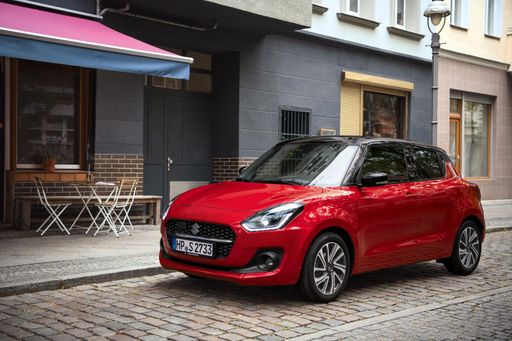 @ Suzuki Motor Corporation
@ Suzuki Motor Corporation
Suzuki Swift
Kia Picanto
The Kia Picanto is a compact city car that combines practicality with a stylish design, making it an appealing option for urban drivers. Its cleverly designed interior maximises space, providing ample room for passengers and luggage despite its small footprint. With its efficient fuel consumption and easy manoeuvrability, the Picanto is well-suited for navigating through bustling city streets.
details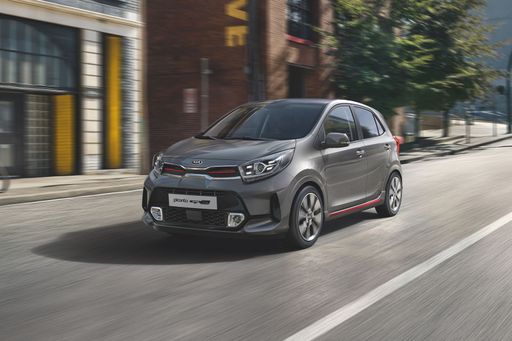 @ Kia Corporation
@ Kia Corporation
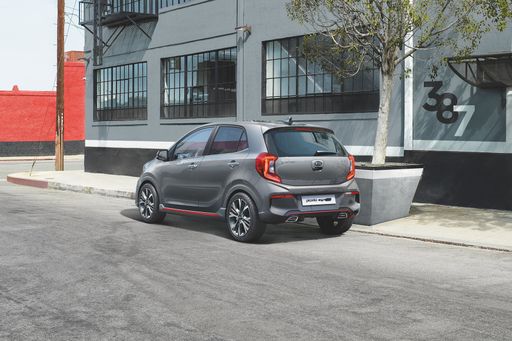 @ Kia Corporation
@ Kia Corporation
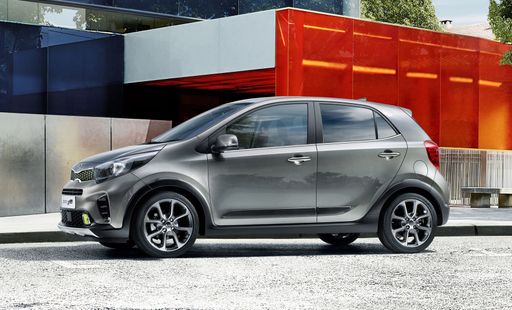 @ Kia Corporation
@ Kia Corporation
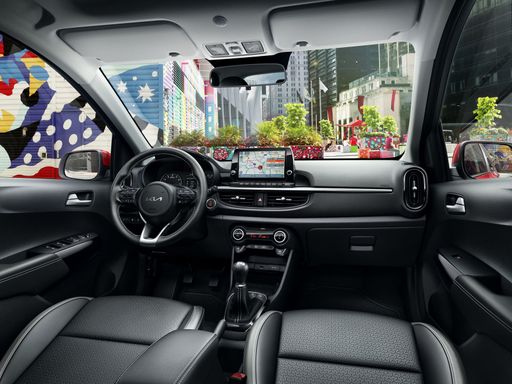 @ Kia Corporation
@ Kia Corporation
Suzuki Swift
The Suzuki Swift is a compact hatchback that offers a spirited driving experience, making it a popular choice for city dwellers. With its sleek design and agile handling, it effortlessly navigates urban streets while providing a comfortable interior with ample space for passengers and luggage. Its economical fuel consumption and reliable performance make it a practical option for those seeking a balance between style and functionality.
details @ Suzuki Motor Corporation
@ Suzuki Motor Corporation
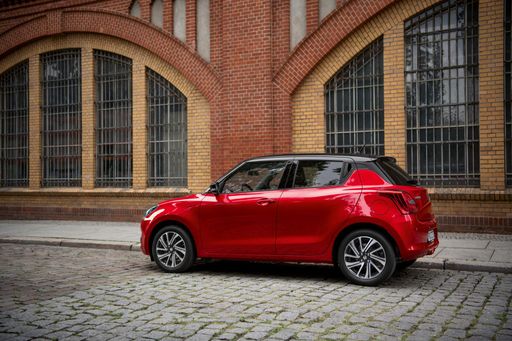 @ Suzuki Motor Corporation
@ Suzuki Motor Corporation
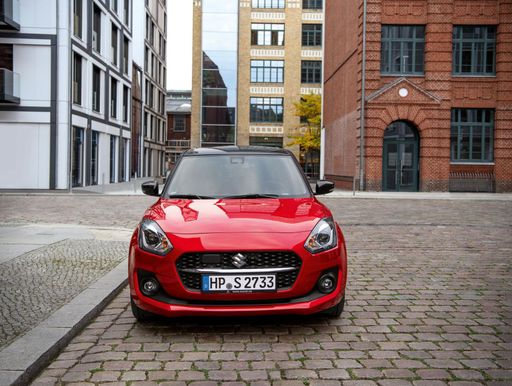 @ Suzuki Motor Corporation
@ Suzuki Motor Corporation
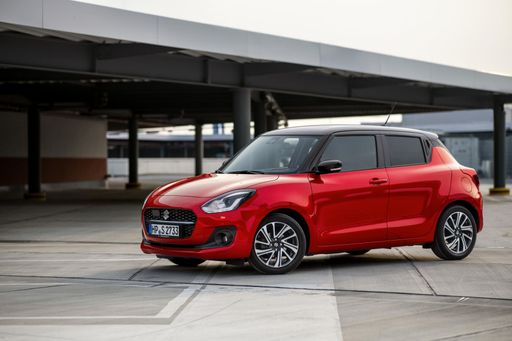 @ Suzuki Motor Corporation
@ Suzuki Motor Corporation
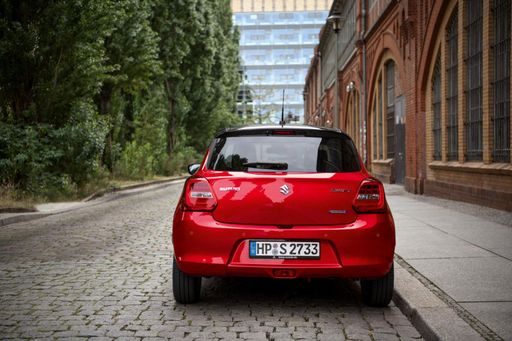 @ Suzuki Motor Corporation
@ Suzuki Motor Corporation
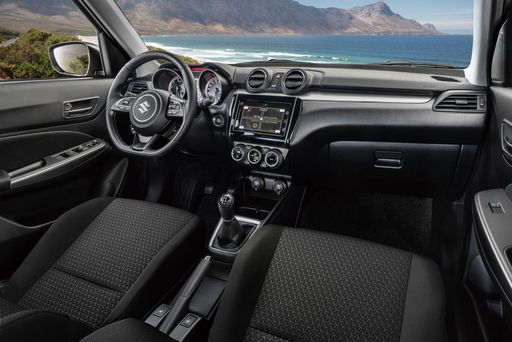 @ Suzuki Motor Corporation
@ Suzuki Motor Corporation
 @ Kia Corporation
@ Kia Corporation
|
 @ Suzuki Motor Corporation
@ Suzuki Motor Corporation
|
|
|
|
Costs and Consumption |
|
|---|---|
|
Price
15300 - 19300 £
|
Price
17100 - 21200 £
|
|
Consumption L/100km
5.6 - 5.9 L
|
Consumption L/100km
4.4 - 4.9 L
|
|
Consumption kWh/100km
-
|
Consumption kWh/100km
-
|
|
Electric Range
-
|
Electric Range
-
|
|
Battery Capacity
-
|
Battery Capacity
-
|
|
co2
127 - 135 g/km
|
co2
98 - 110 g/km
|
|
Fuel tank capacity
35 L
|
Fuel tank capacity
37 L
|
Dimensions and Body |
|
|---|---|
|
Body Type
Hatchback
|
Body Type
Hatchback
|
|
Seats
4 - 5
|
Seats
5
|
|
Doors
5
|
Doors
5
|
|
Curb weight
1124 - 1131 kg
|
Curb weight
1069 - 1145 kg
|
|
Trunk capacity
255 L
|
Trunk capacity
265 L
|
|
Length
3605 mm
|
Length
3860 mm
|
|
Width
1595 mm
|
Width
1735 mm
|
|
Height
1485 mm
|
Height
1485 - 1510 mm
|
|
Max trunk capacity
1010 L
|
Max trunk capacity
980 L
|
|
Payload
253 - 332 kg
|
Payload
282 - 296 kg
|
Engine and Performance |
|
|---|---|
|
Engine Type
Petrol
|
Engine Type
Petrol MHEV
|
|
Transmission
Manuel, Automatic
|
Transmission
Manuel, Automatic
|
|
Transmission Detail
Manual Gearbox, Automated Manual
|
Transmission Detail
Manual Gearbox, CVT
|
|
Drive Type
Front-Wheel Drive
|
Drive Type
Front-Wheel Drive, All-Wheel Drive
|
|
Power HP
68 HP
|
Power HP
82 HP
|
|
Acceleration 0-100km/h
14.6 - 17.2 s
|
Acceleration 0-100km/h
-
|
|
Max Speed
160 - 162 km/h
|
Max Speed
160 - 170 km/h
|
|
Torque
96 Nm
|
Torque
112 Nm
|
|
Number of Cylinders
3
|
Number of Cylinders
3
|
|
Power kW
50 kW
|
Power kW
61 kW
|
|
Engine capacity
998 cm3
|
Engine capacity
1197 cm3
|
General |
|
|---|---|
|
Model Year
2025
|
Model Year
2024
|
|
CO2 Efficiency Class
D
|
CO2 Efficiency Class
C
|
|
Brand
Kia
|
Brand
Suzuki
|
What drive types are available for the Kia Picanto?
Available configurations include Front-Wheel Drive.
The prices and data displayed are estimates based on German list prices and may vary by country. This information is not legally binding.
